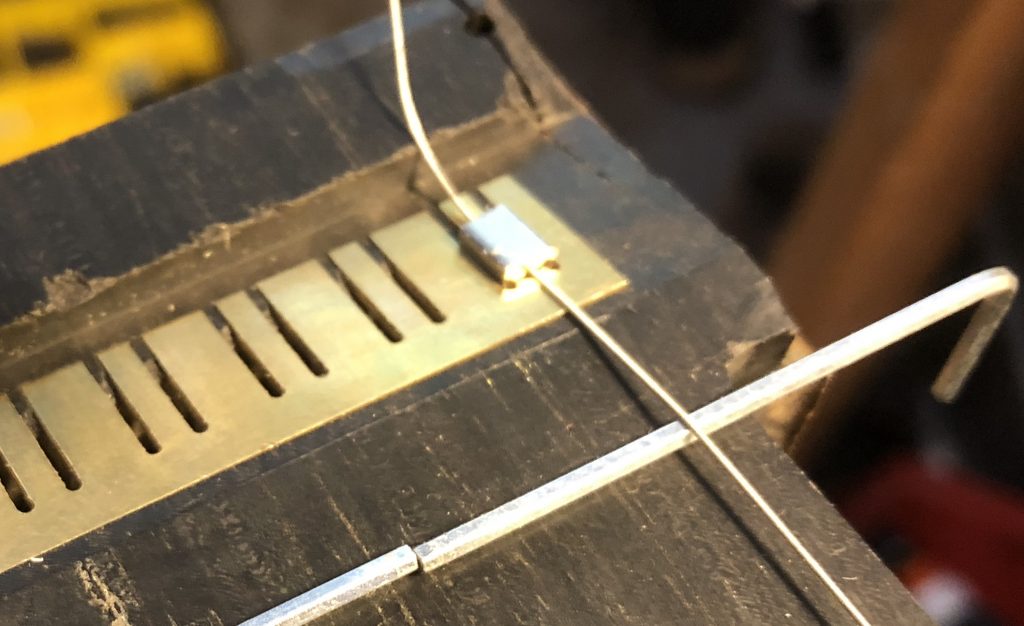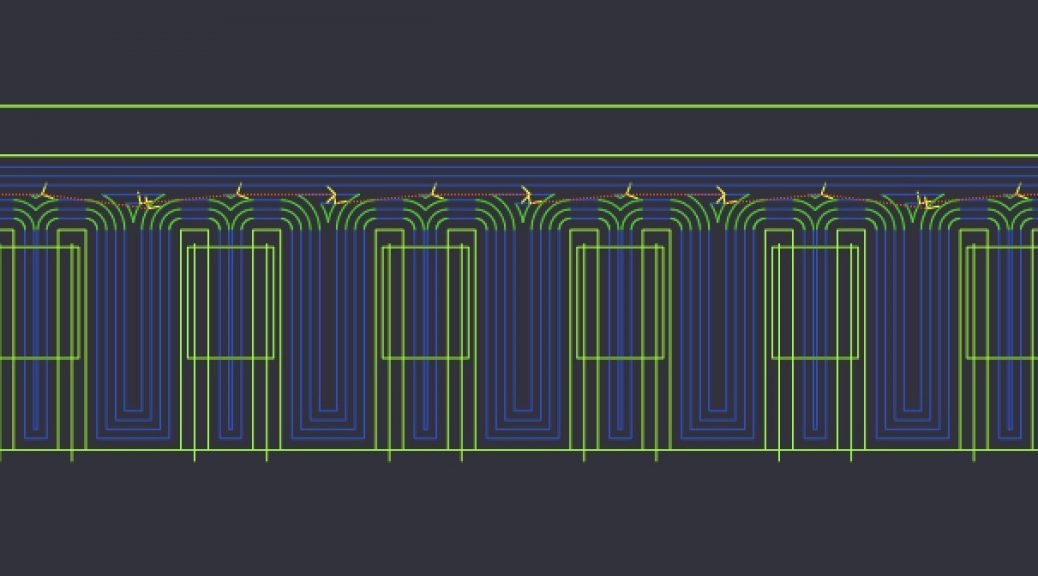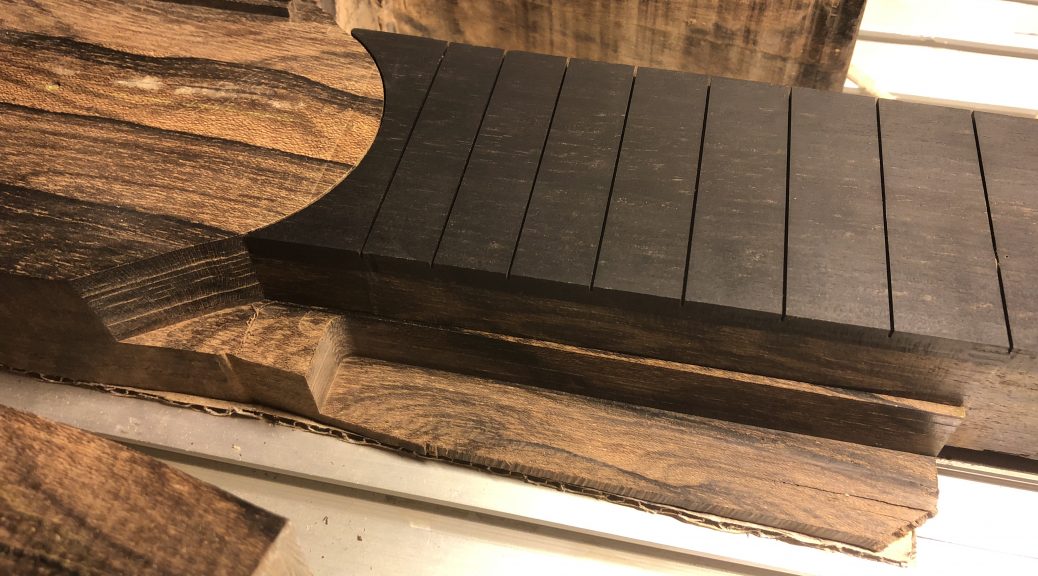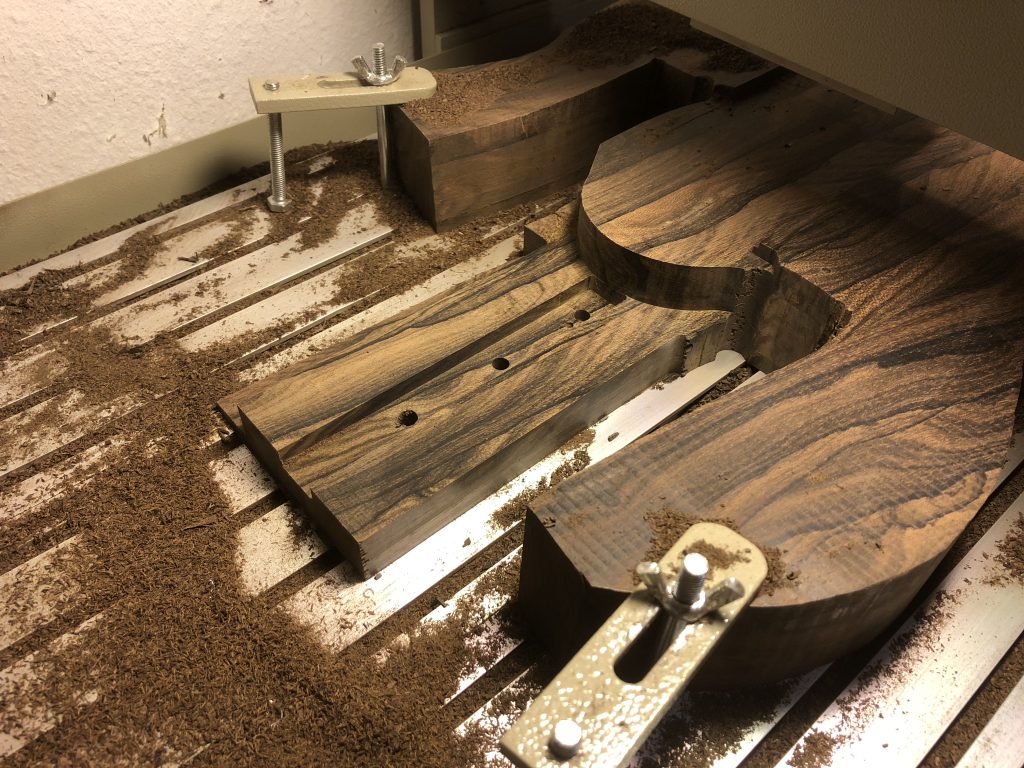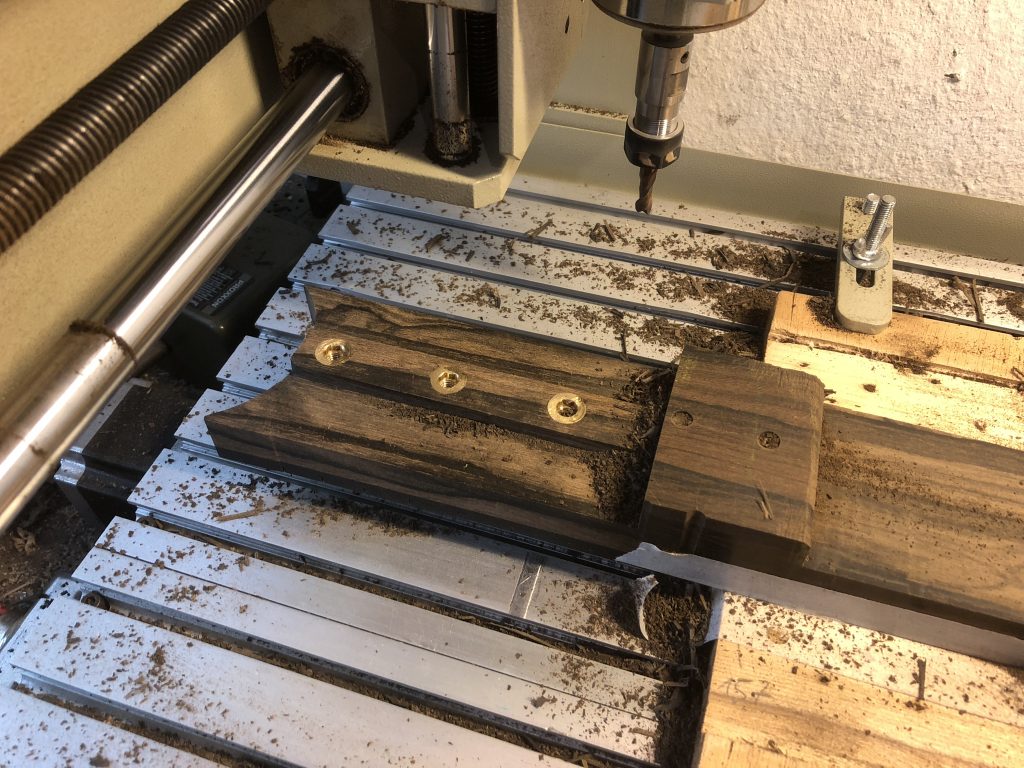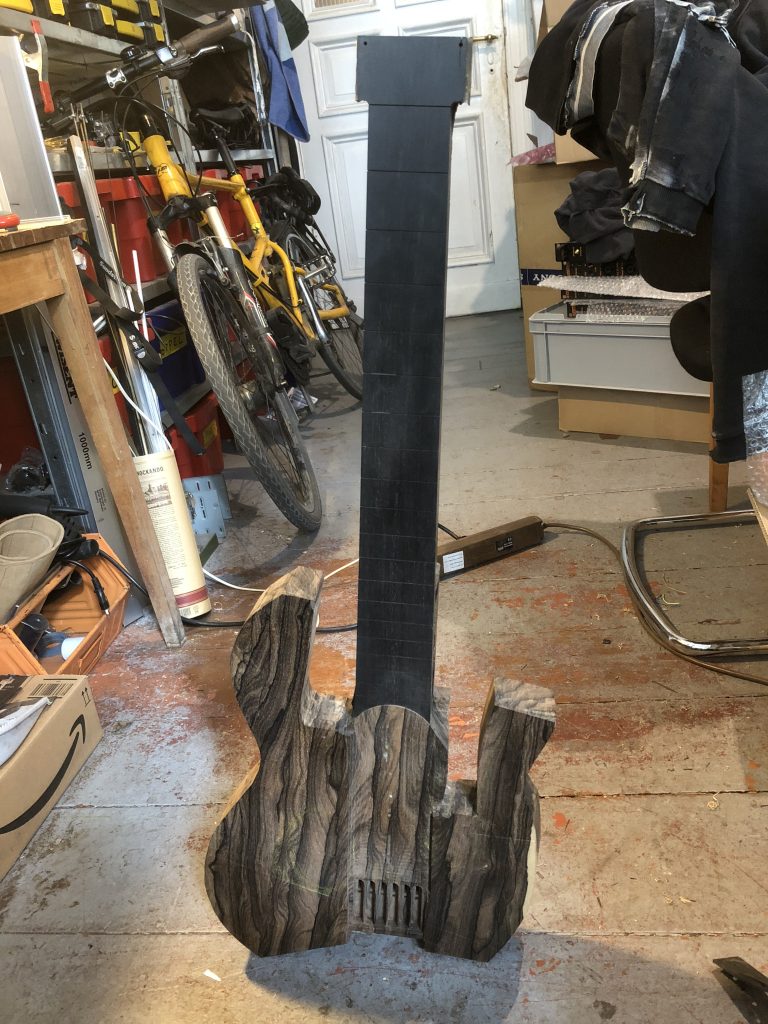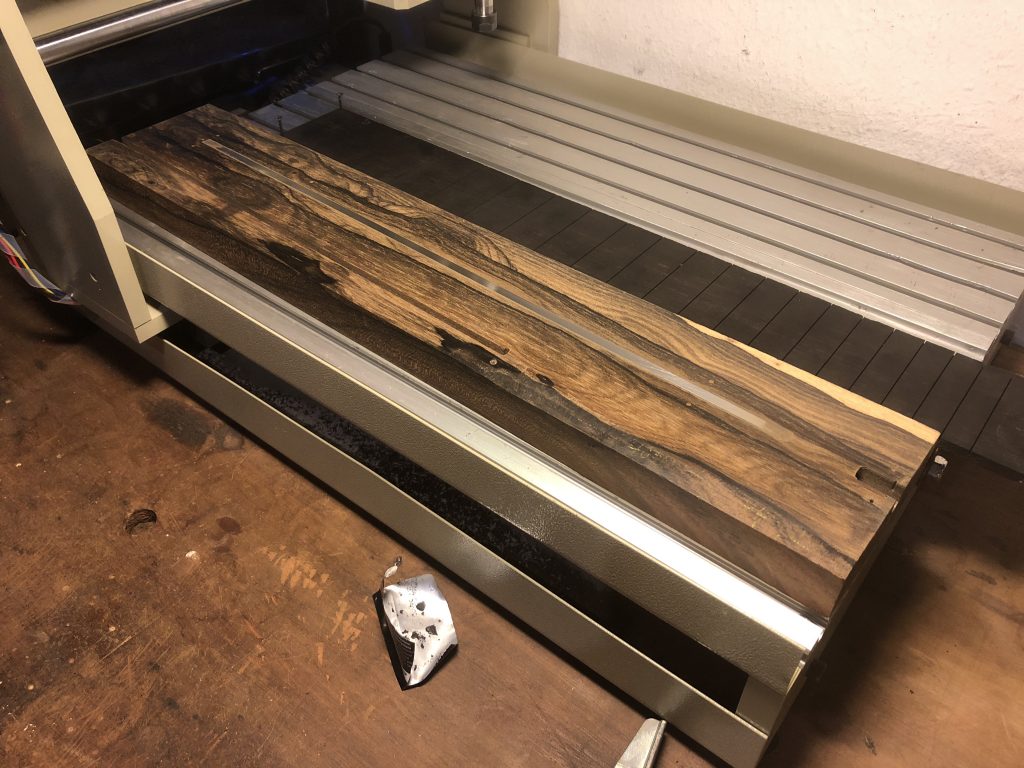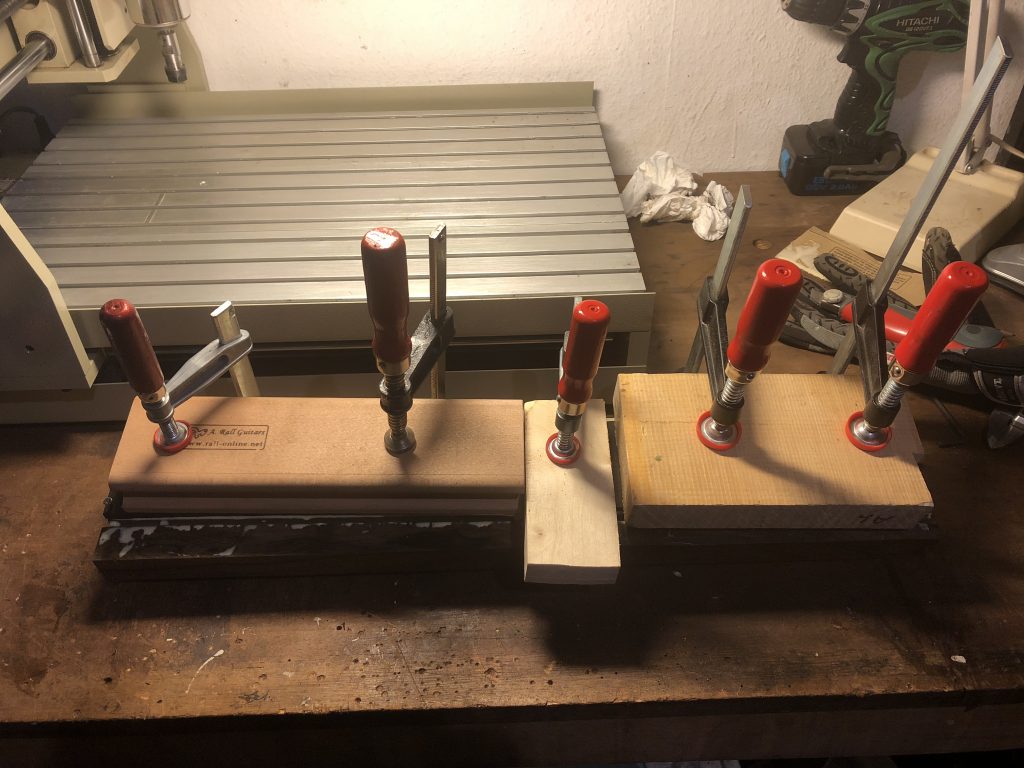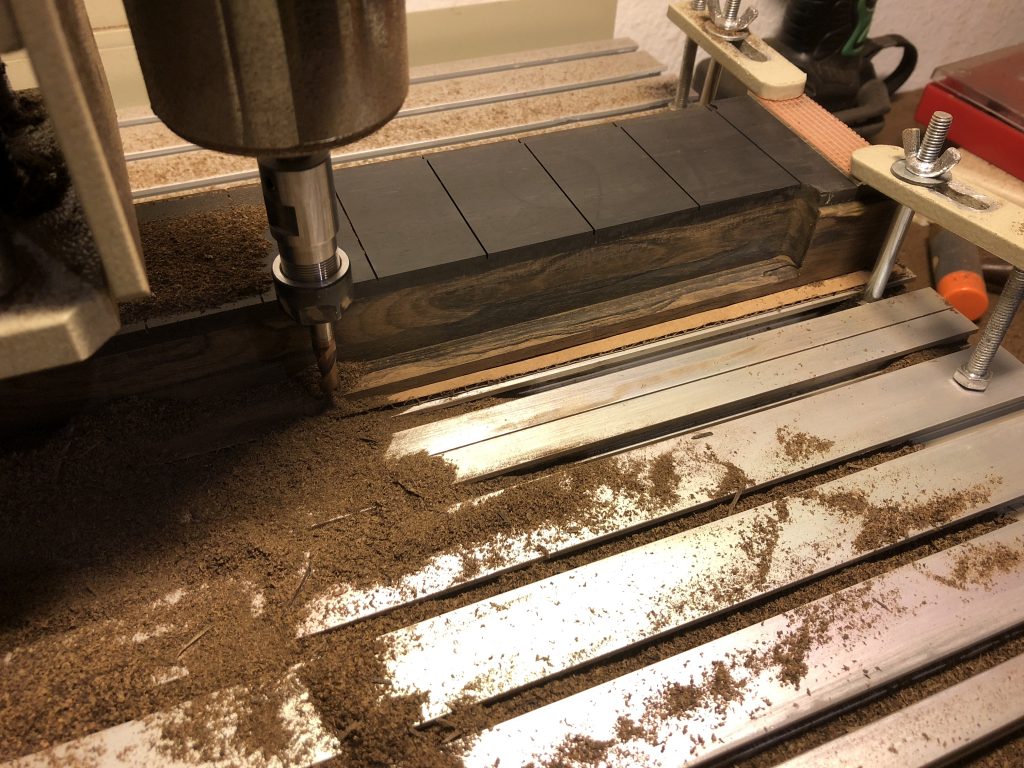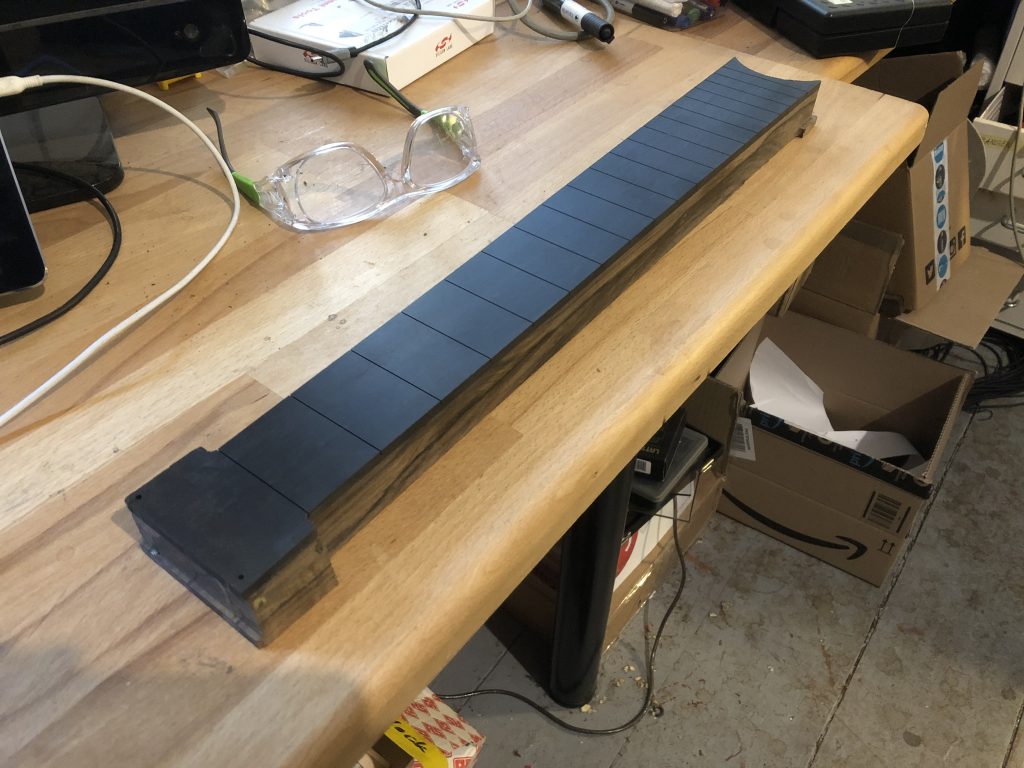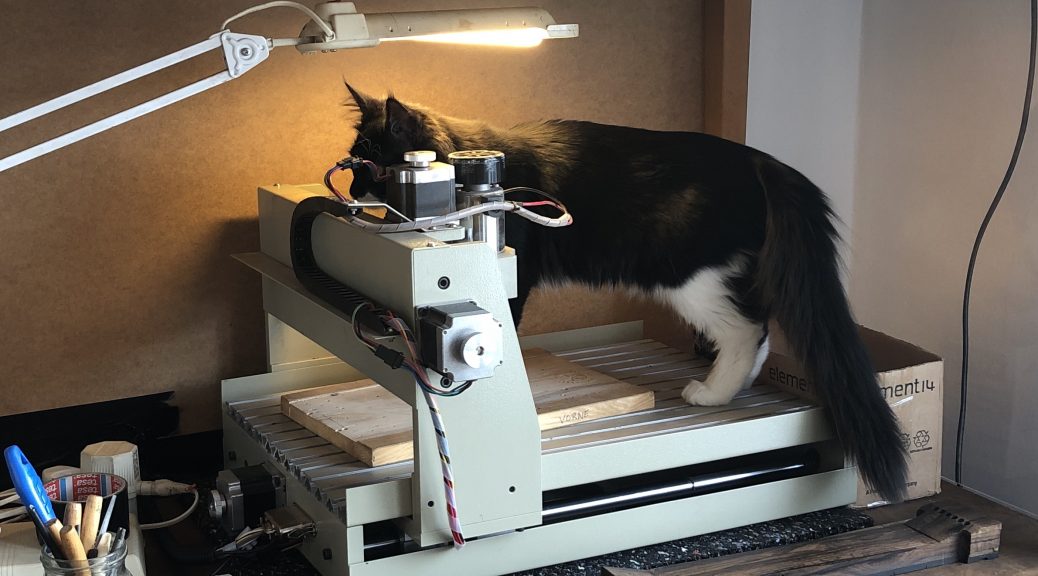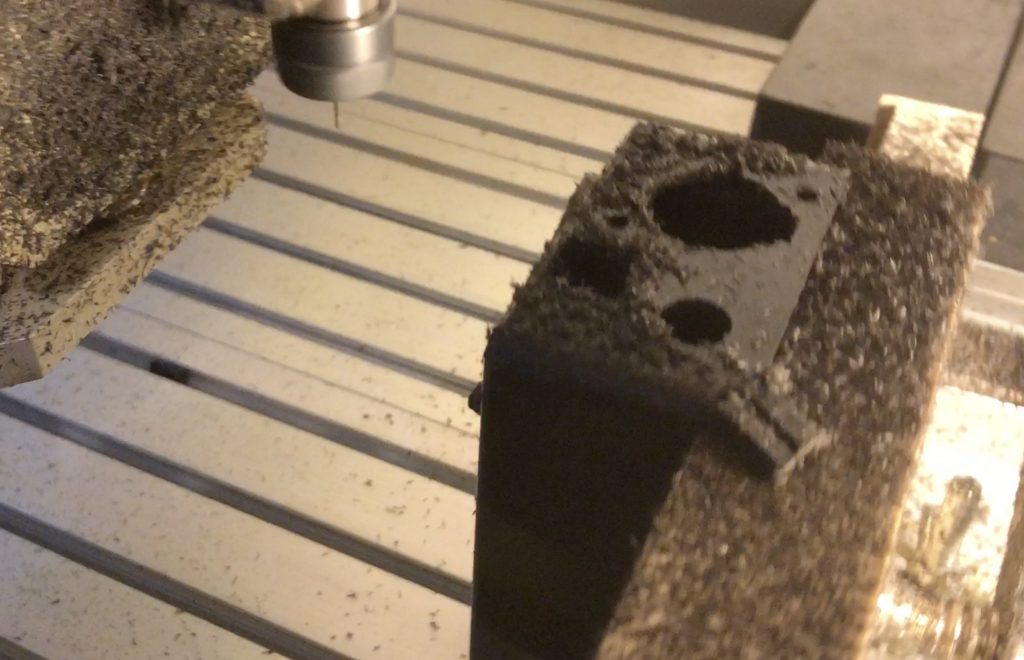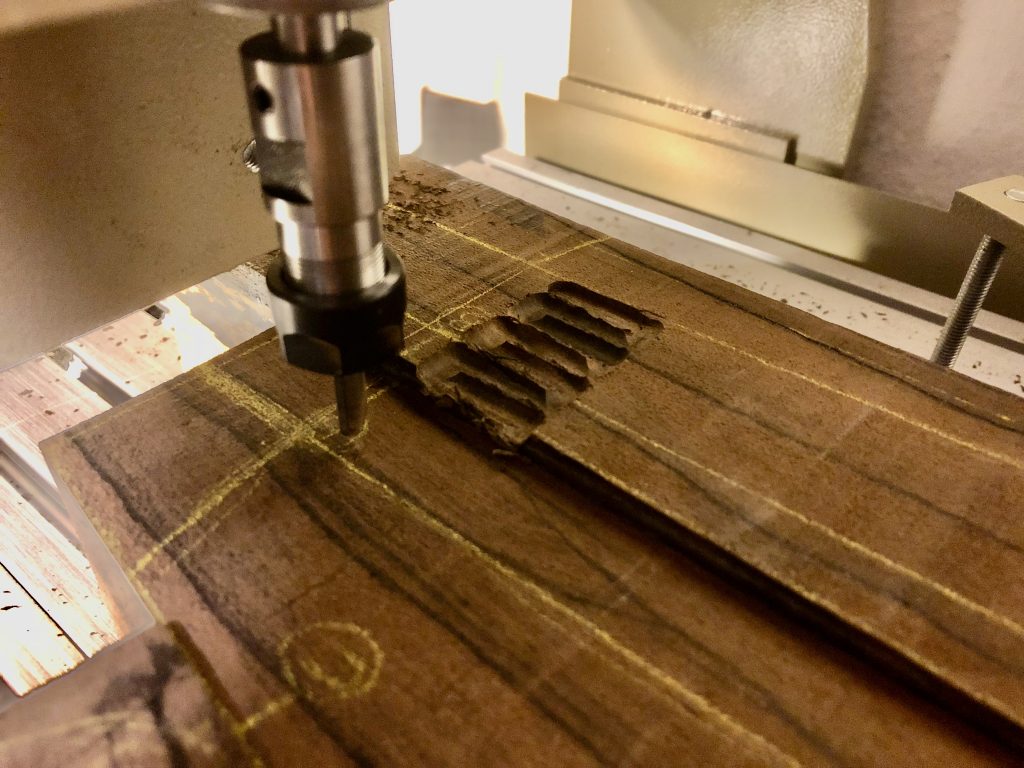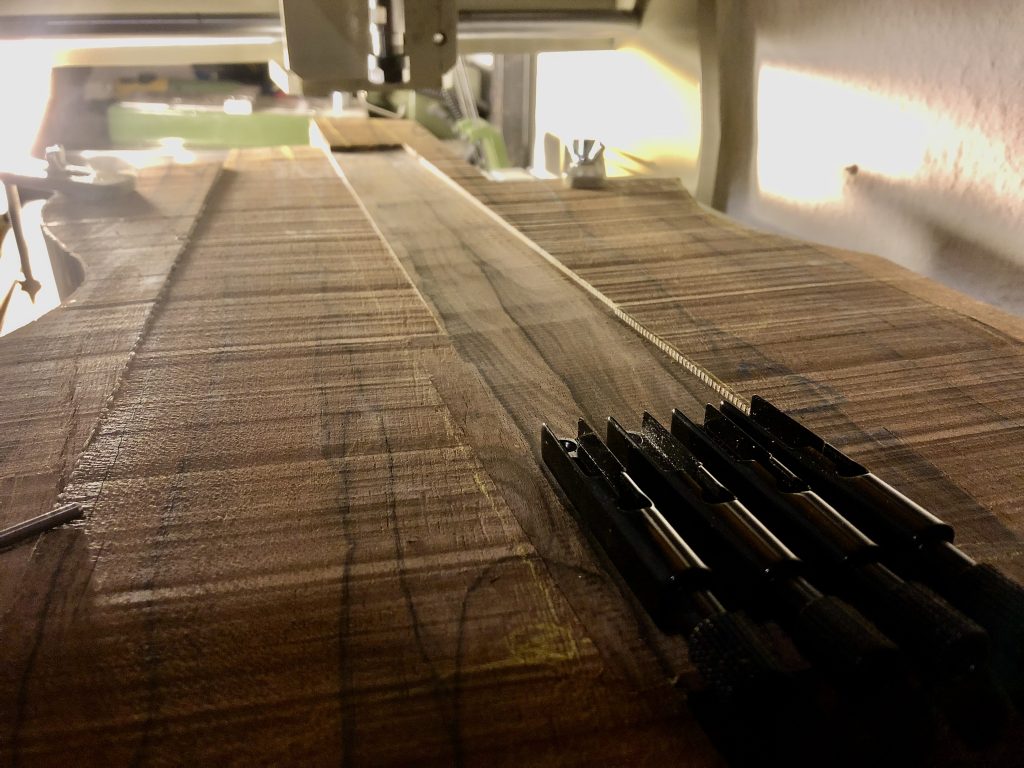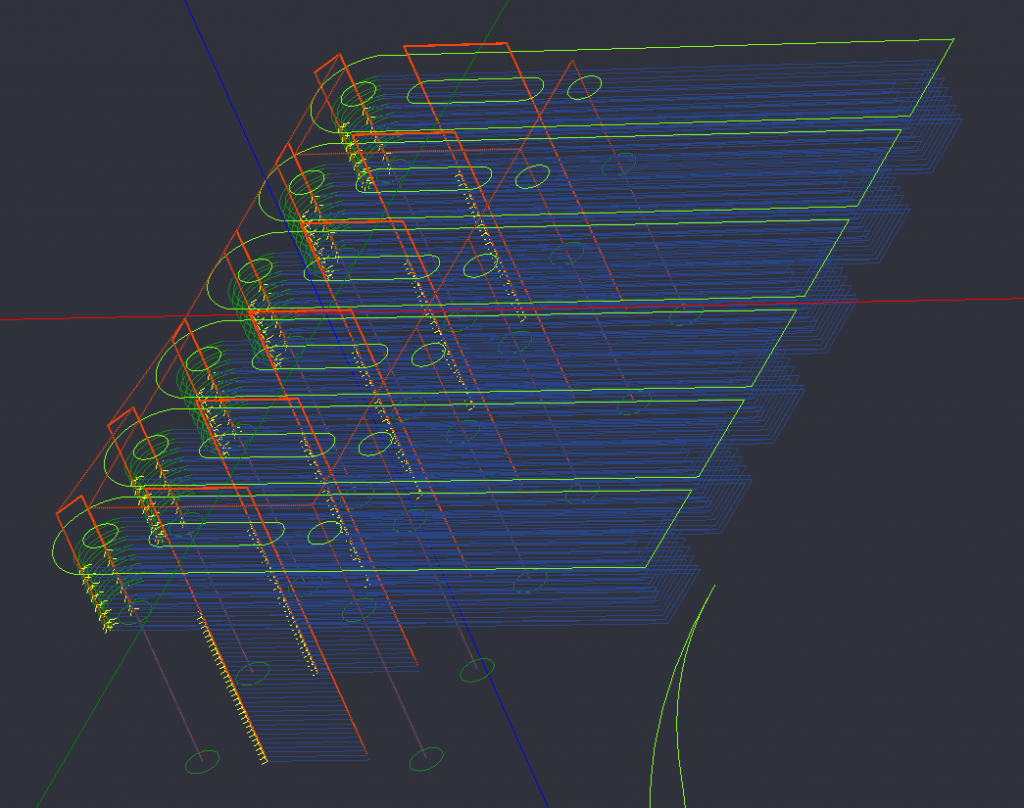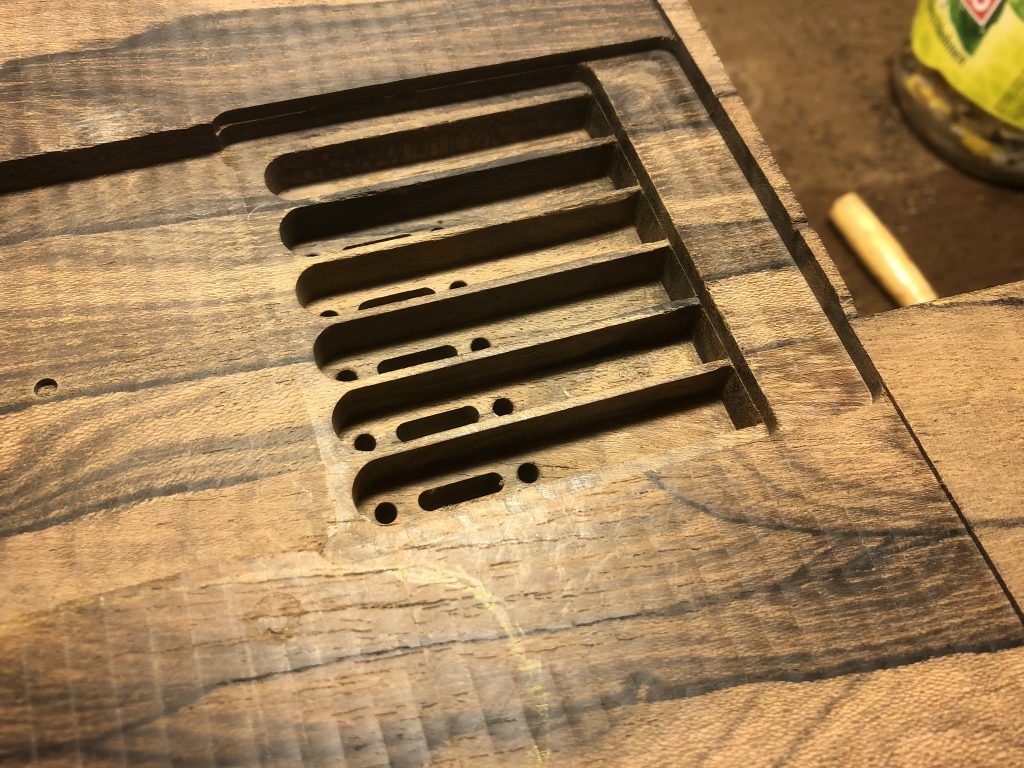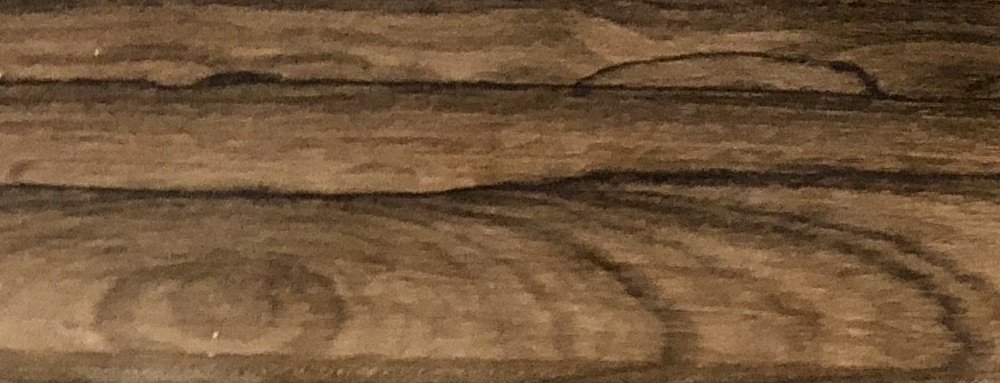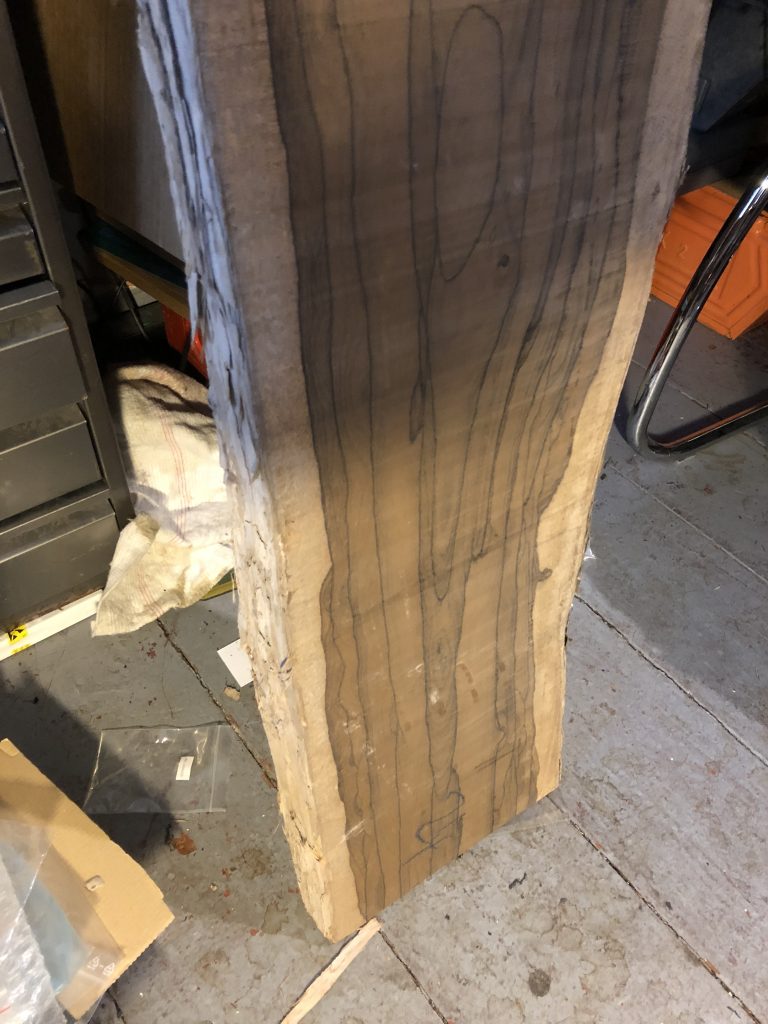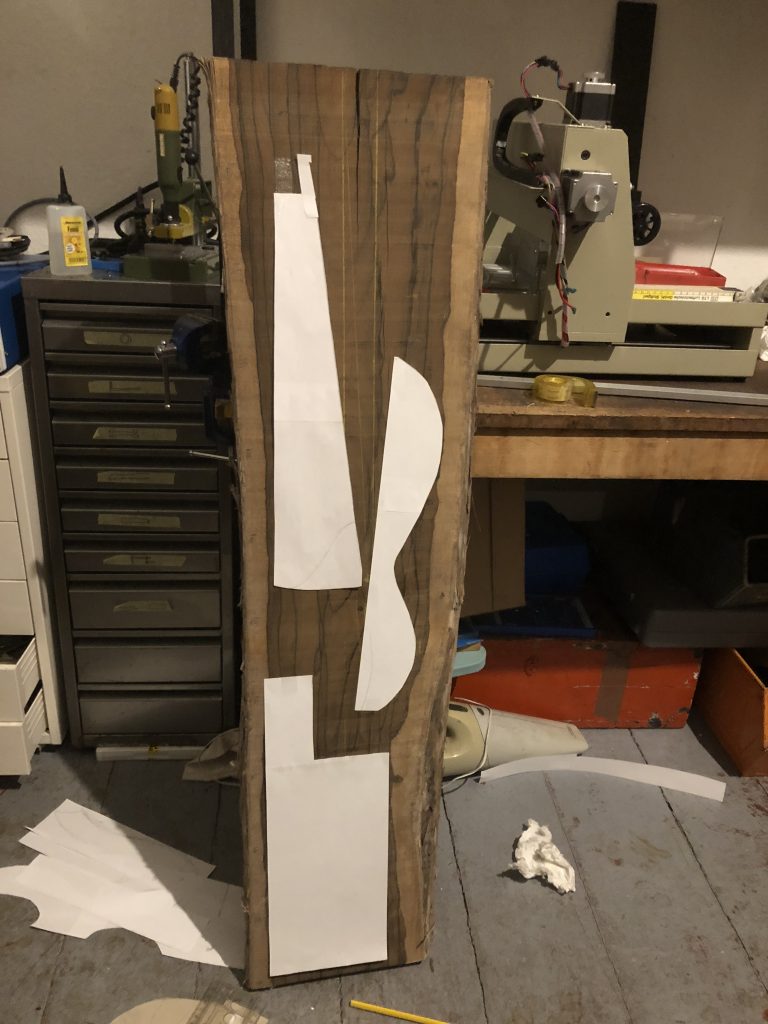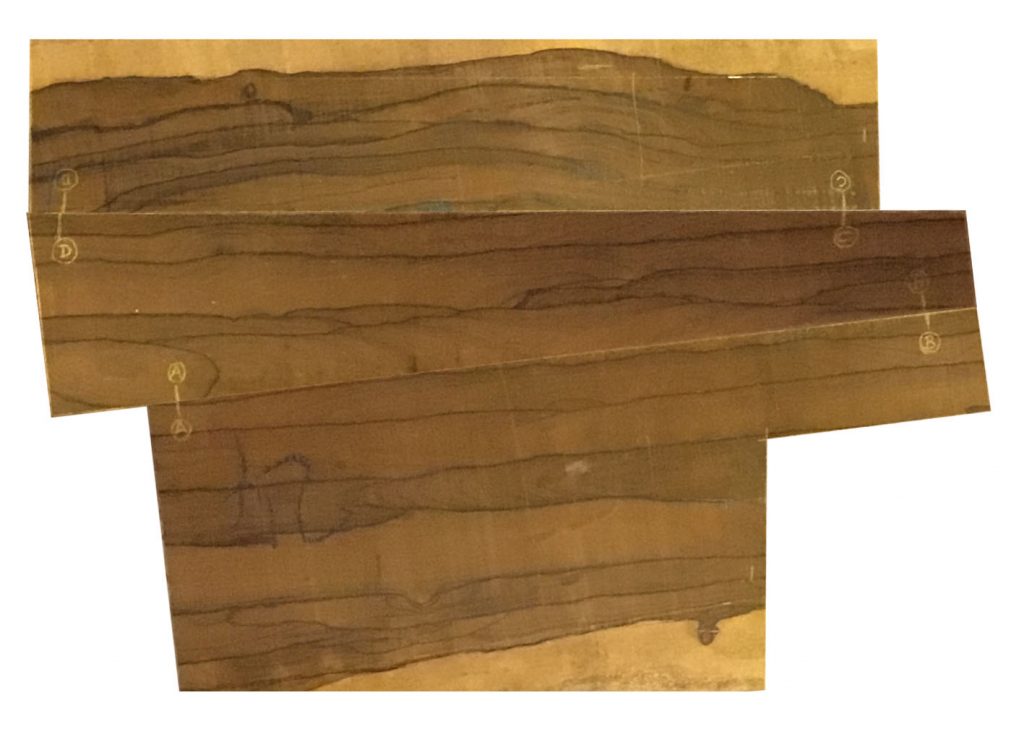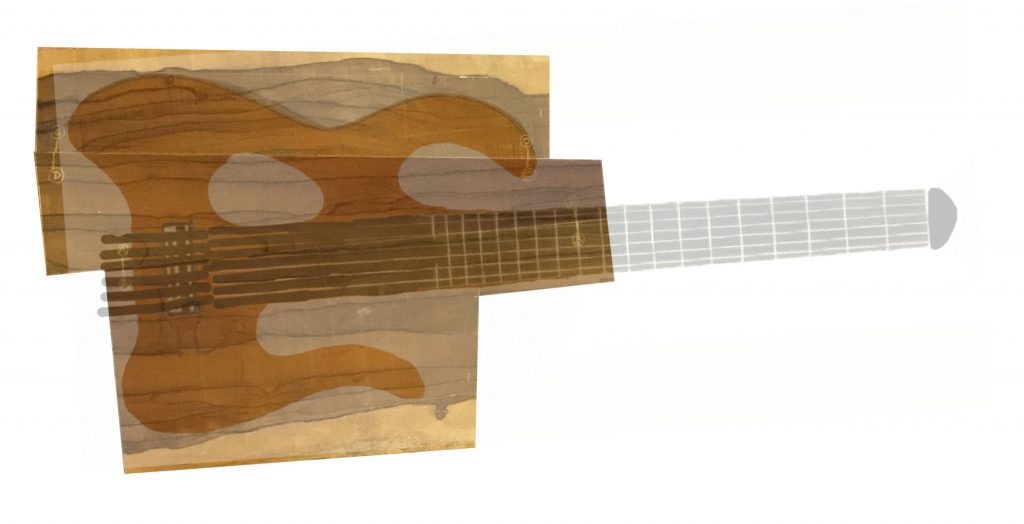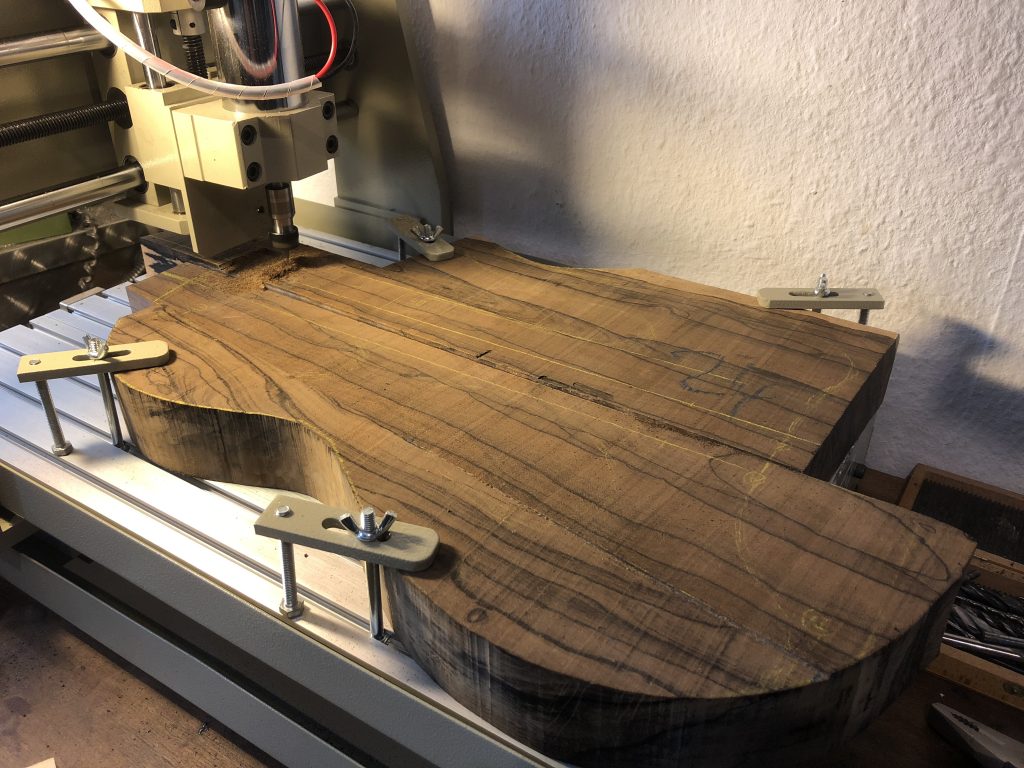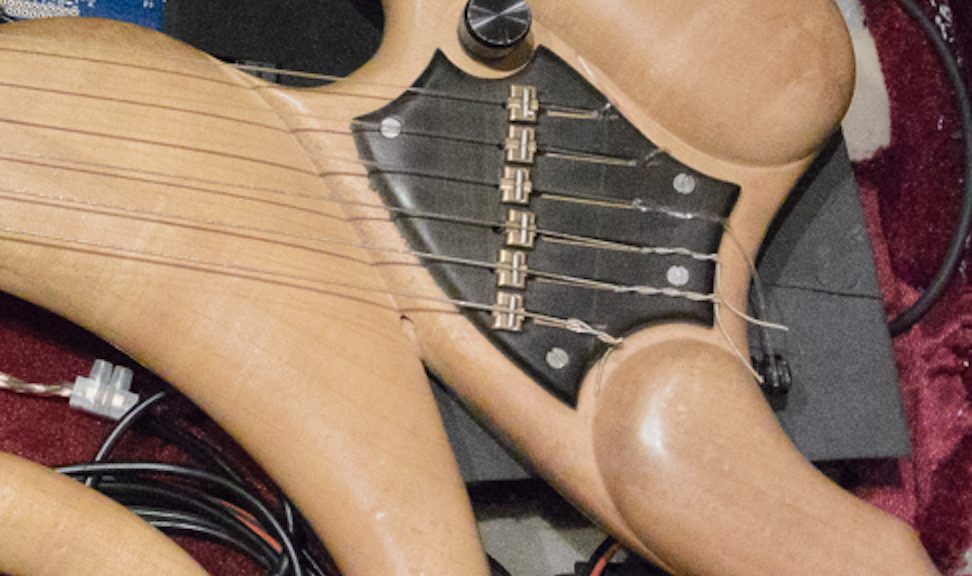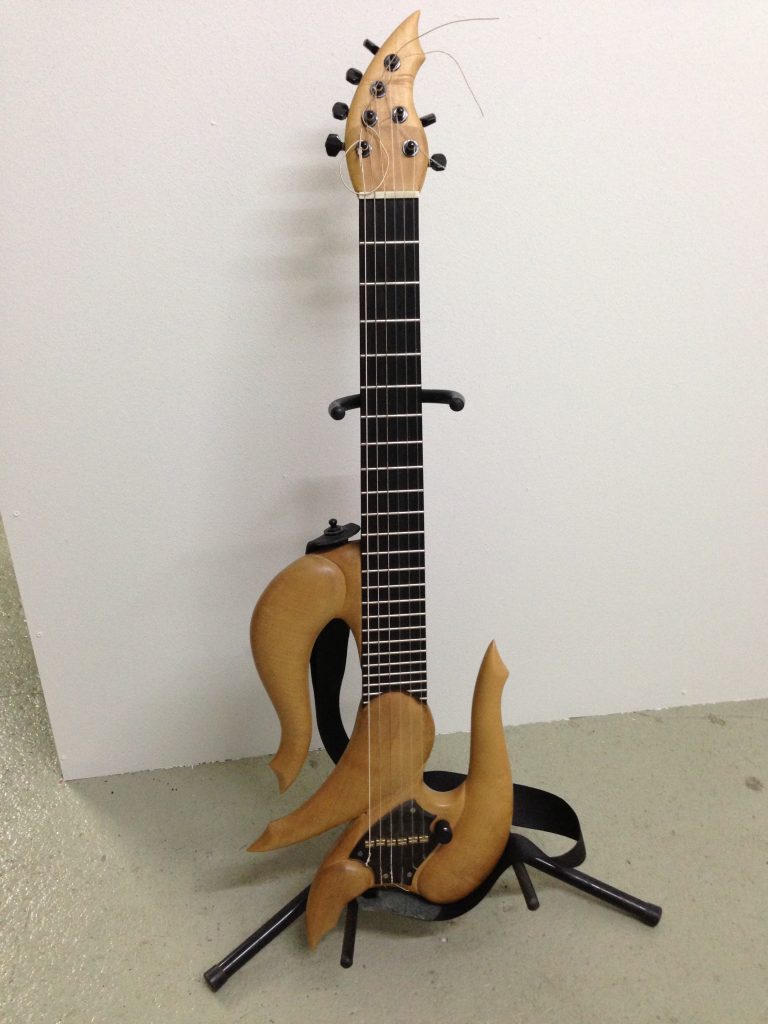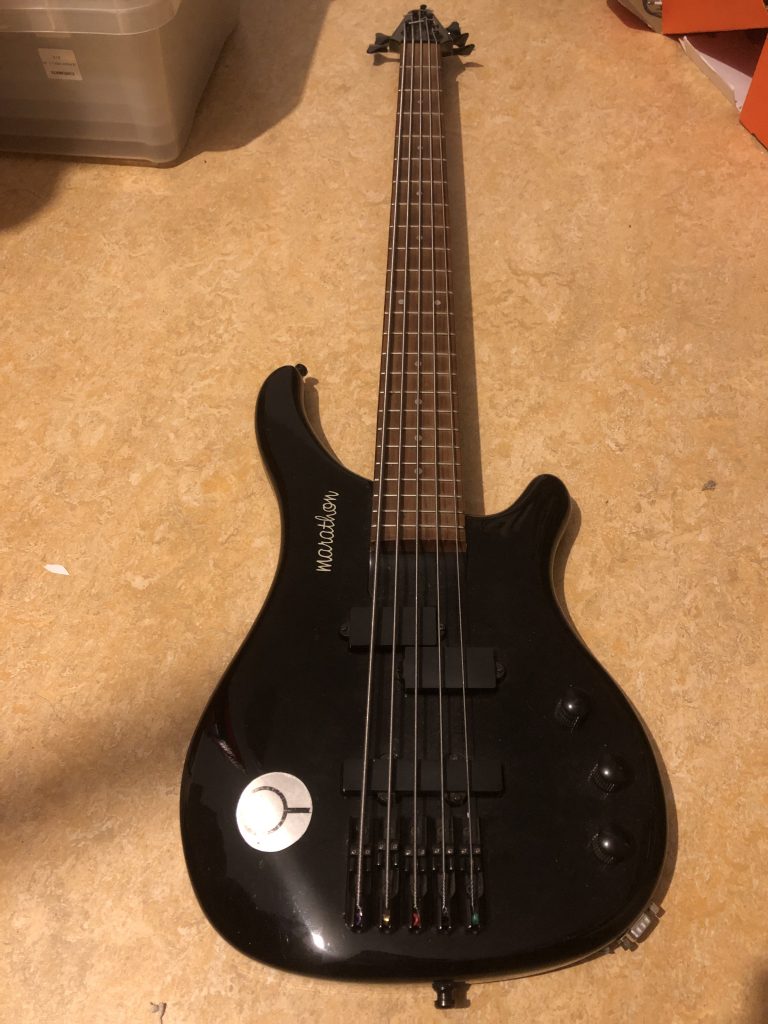As you might have guessed from the previous posts and pictures, the amount of wood I left for the headstock would not allow for the traditional placements of the tuners. In other words, it’s a so-called head-less design (technically there’s actually still a head – it’s just much shorter)
So this approach calls for two components:
First, you need tuning machines down at the bridge. This is relatively easy to source – in this case I went for ABM bridges with Graphtec pickups. Thanks to Peter Borowski from ABM, Berlin for helping with this.
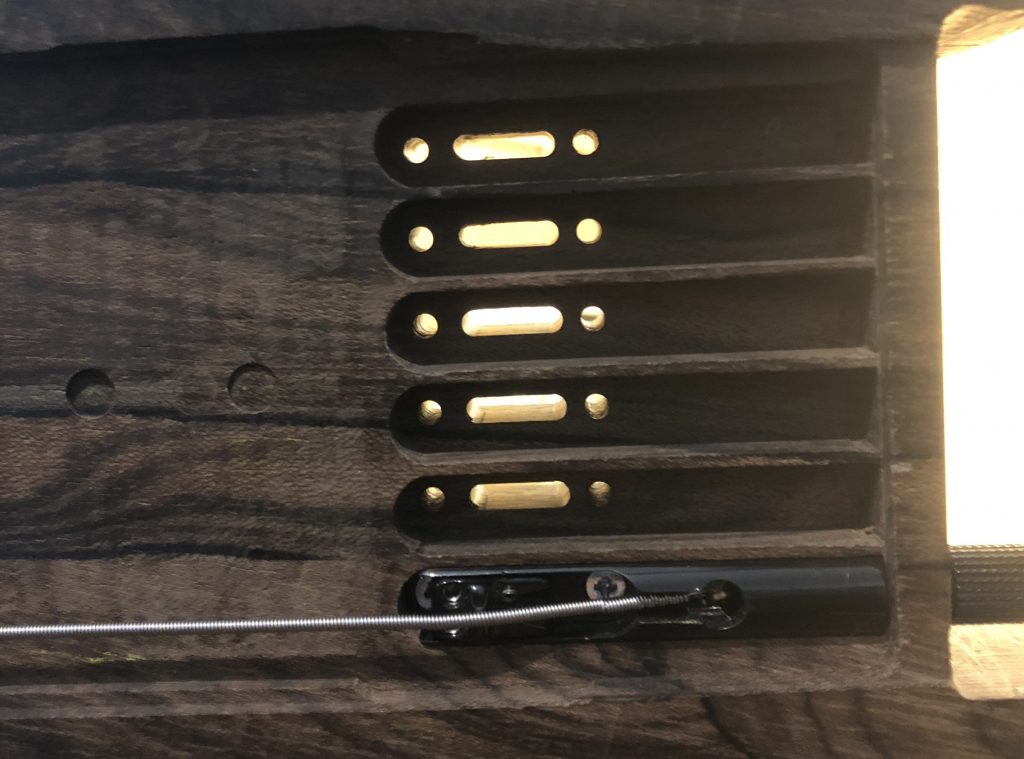
The second part are the clamps to hold down the strings at the headstock. While there are purchase options for these too, most do not come as single pieces but as a block for all 6 strings. Which, again, doesn’t work with the wide string spacing I prefer.
So I decided to come up with my own design, where the plan was to work as much as possible with the wood itself, rather than attaching a full-metal solution.
Of course metal is needed in some parts, otherwise the wood would wear down over the years. So I designed an inlay where the string runs over a tiny metal bridge, with slots at each side for the metal clamp.
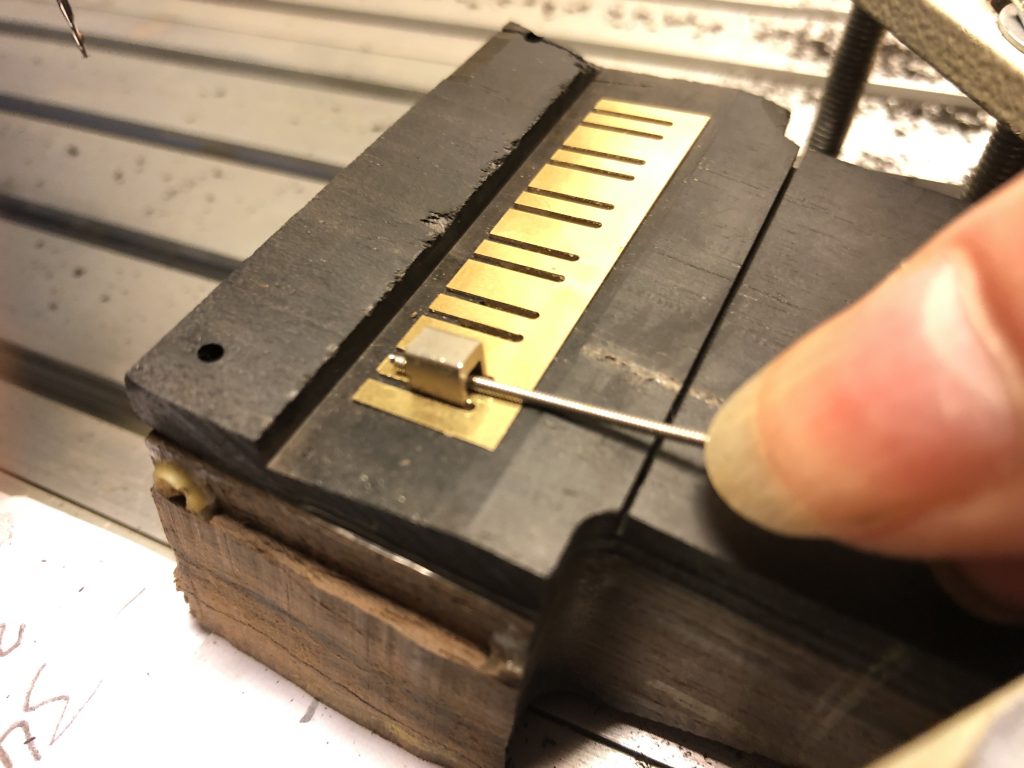
I milled this inlay out of a piece of brass that I had still lying around. This was the first time I used the CNC for cutting metal, so I was a bit nervous if it could do the job, but things turned out nicely without breaking anything:
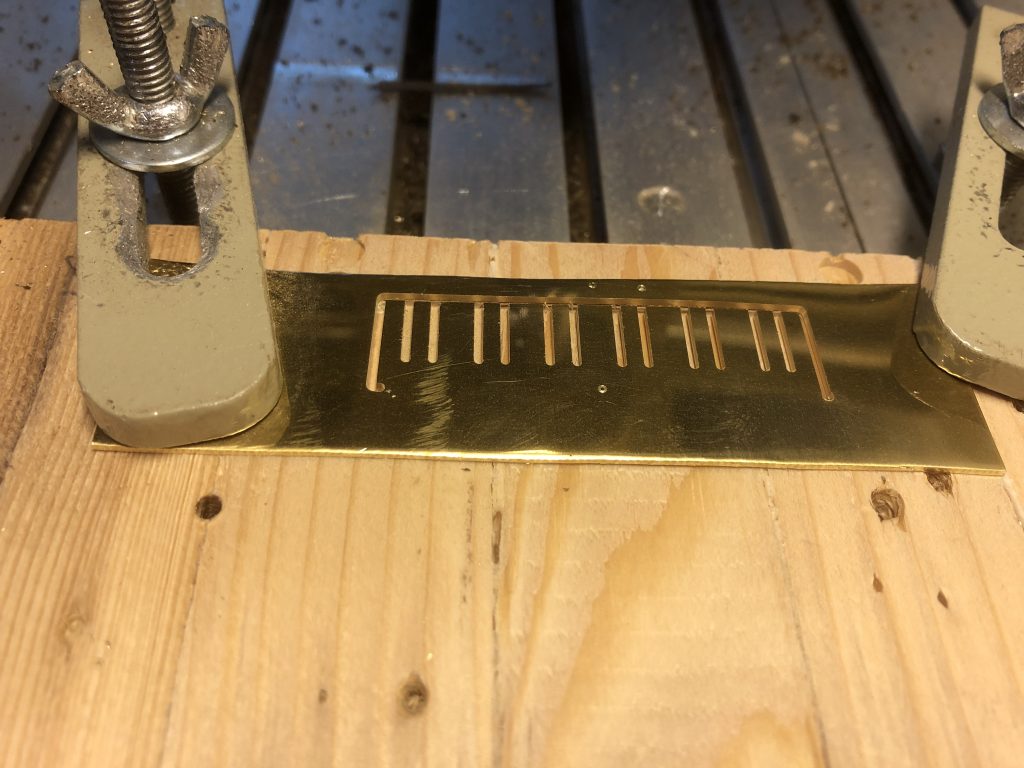
And the pocket to match:
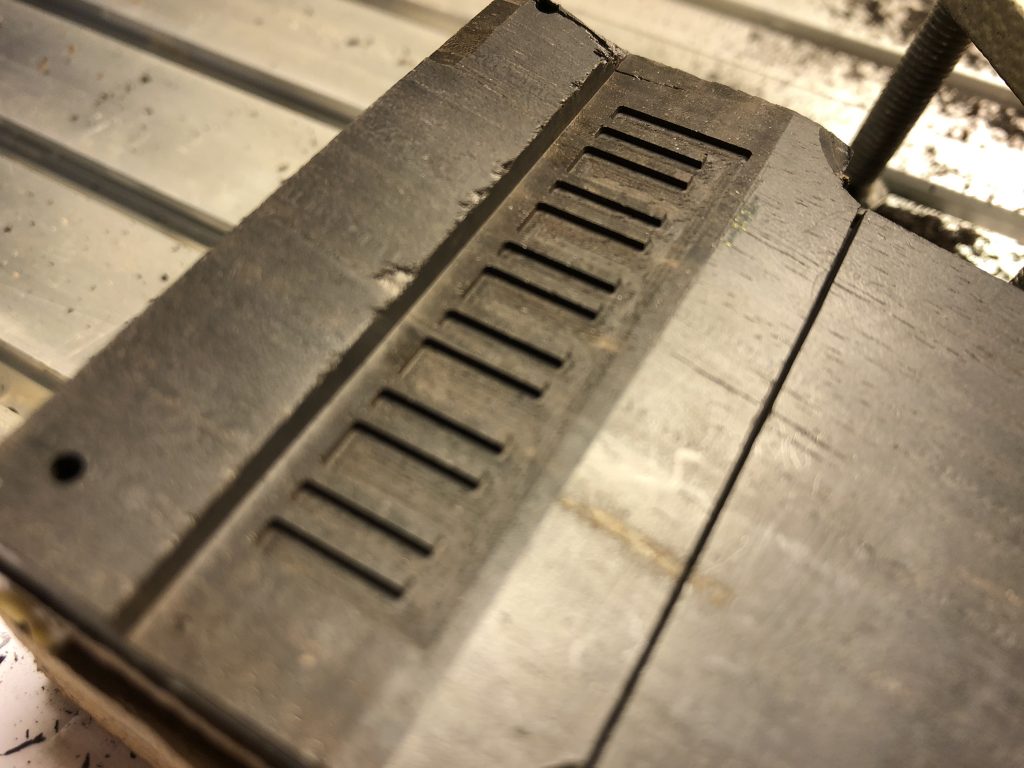
This was then extended with deeper holes for the clamps:
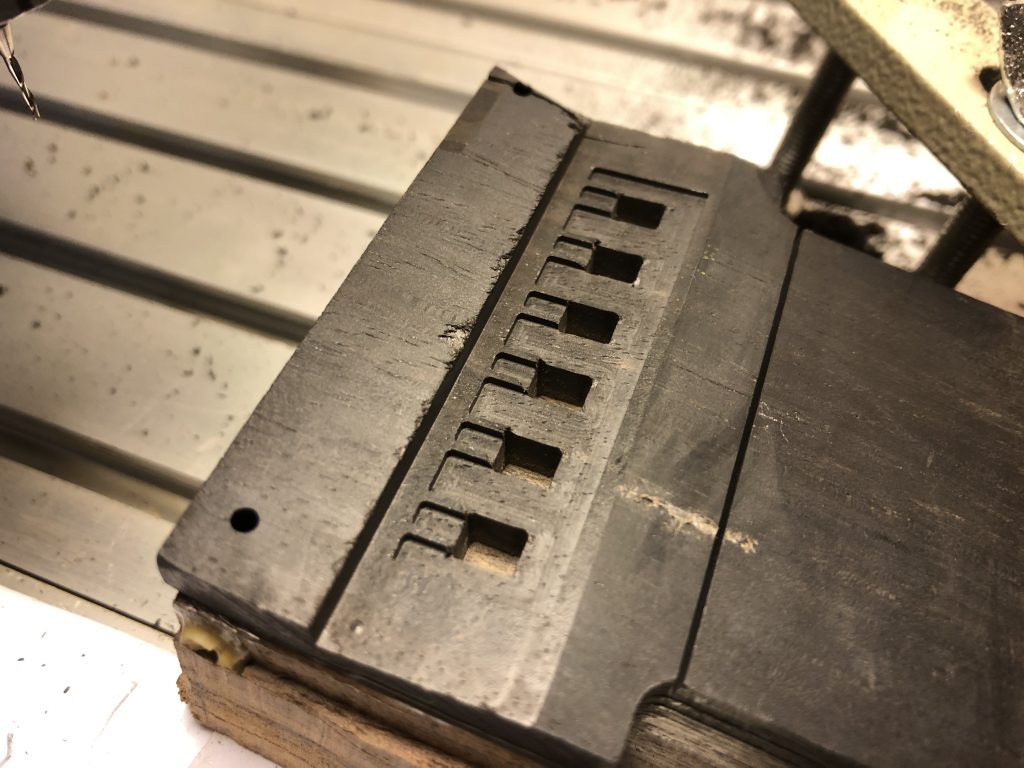
And holes from the back for screws to hold them down:
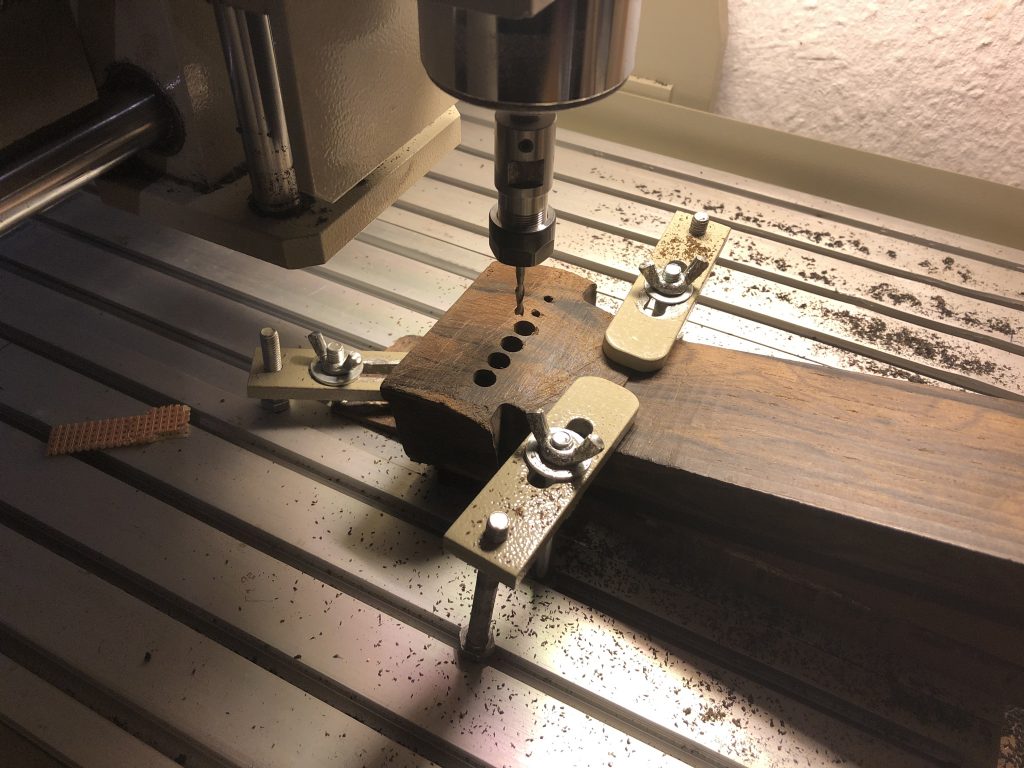
Tada, first string clamped down:
